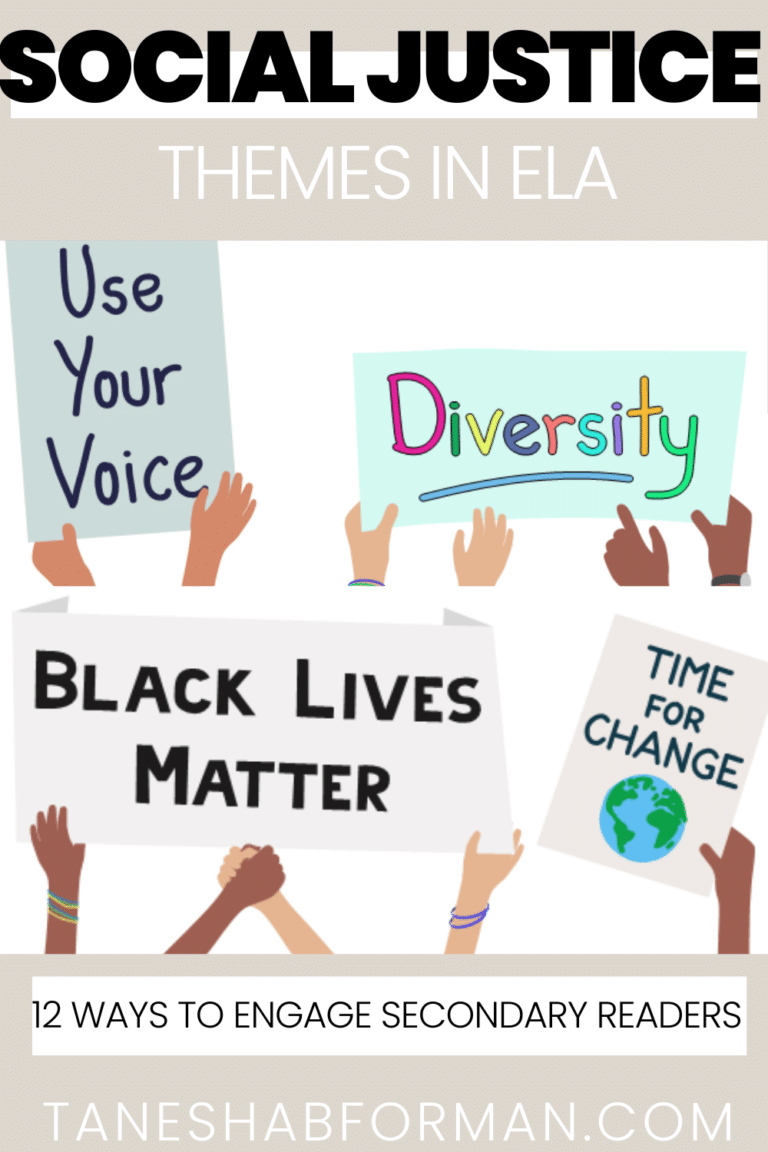
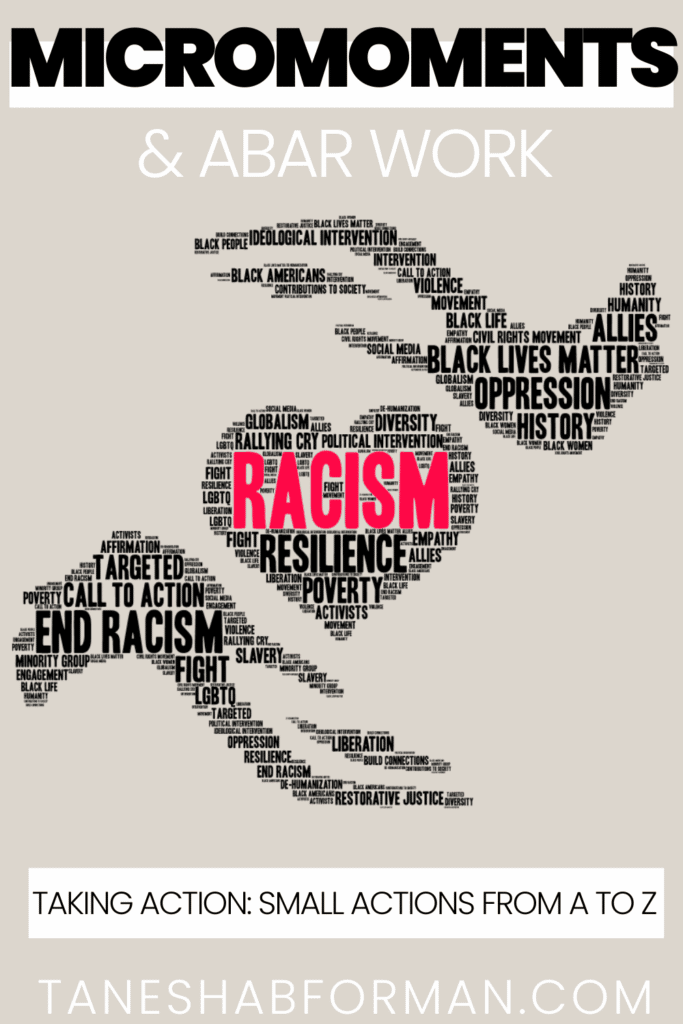
A to Z Anti-bias/Anti-racist micro moments
One question I often receive is “what are anti-bias and anti-racist actions I can take on a daily basis?” A great question, but I am no expert…who is? I am a teacher seeking to do better by my school community every time I step in front of students. That said, I get it wrong. I learn. I do better. Below is an A to Z (draft) list of actions that all teachers can take to make their classrooms more welcoming and inclusive spaces.
**Note: This list is not a checklist. It’s not intended to be used to say “I do that so my classroom is anti-bias and anti-racist.” The work is in ongoing learning, honest reflection, and direct action. It’s a belief in constantly questioning and challenging the status quo. I reserve the right to change my views as a evolve as a person.
- Apologize when you make a mistake. This is an underrated action, but demonstrates leadership and ownership for teachers. It models vulnerability for students and makes space for them to feel comfortable with failing forward.
- Build relationships with students and their “families.” Students have a network that exists far beyond school. Make an attempt to get to know the people in their lives – not for transactional purposes. Lean in and connect with families so that you can learn from them as the experts of their child, and partner with them for the sake of the student. Note: Families can refer to parents, guardians, coaches, mentors, cousins, friends, ect.
If our first response to student behavior is to look for something punitive to do to kids, we are not looking for relationship. We are interested in regulation. No one likes to be controlled. – Tamara Russell (Mrs. Russell’s Room)
- Celebrate student personal bests and growth. Each student brings a unique set of skills, strengths, and opportunities for growth. It’s not best practice to limit them with comparisons and “absolute bars” for achievement. Recognizing growth opens the door for teachers to see and respond to each student’s specific needs.
- Discuss race, class, privilege, power, gender identity, diversity & student career and life interests. Equipping students with the language and knowledge of our history that is rooted in inequity will empower them as they navigate a world where they are bombarded with stereotypes, microagressions, and racism. It also counters the narrative that such topics are “taboo,” and provides space for students to reflect and process on issues that might currently impact them. A discussion increases the likelihood of students feeling seen and validated. Additionally, take time to get to know student’s why. Check out thispost on how to support student’s dreams and aspirations.
- Encourage students to focus on their internal locus of control. Let students know the importance of doing what they can to impact situations and knowing when to step back. Discuss situations that extend beyond their sphere of control and strategies for moving forward.
Example from Missing Tooth Grins - Foster a classroom environment with a sense of belief and belonging. Be intentional about the direct actions that you take to let students know they are welcome and belong in your classroom – as they are. Does your classroom or school have:
- gender neutral bathrooms?
- diverse books in the library?
- time for students to share their interests?
- student led goals?
- teachers who welcome students into their classrooms?
- classroom contracts/rules created by students?
- representative signage?
- Give asset based feedback. When assessing student work, leverage their strengths as a tool for pushing them. Build them up by what they know and can do. An asset-based approach focuses on building relationships and an understanding of students rather than punishing them for what they don’t know or can’t do yet.
- Have students evaluate their work. Self-reflection is a major life skill. Allowing students to reflect on their work taps into their why and increases their ownership for their work. It also gives teachers a window into how students feel about the work.
- Increase student classroom responsibilities.#ownership The classroom should not revolve around the teacher, but rather the students. Below are ideas, but not all encompassing. The bigger idea is focusing on inviting students into the process of managing their education. Can students choose:
- their partners for group work?
- activities from a choice board?
- their seats?
- classroom jobs?
- Just do the work. Prioritize reading, researching, and rethinking your teaching practices. The “work” is not linear, but the continuous practice of self-reflection and self-awareness regarding what and how you are leading your classroom. Here’s some resources (no affiliate link):
– Why are all the Black Kids Sitting Together in the Cafeteria? by Dr. Beverly Tatum
- Know your triggers. Understand how your beliefs and views about a situation influence your reactions in the situation. Get meta and reflect on the root causes of your triggers. BE HONEST and go beyond surface level thinking. Is there something about race, gender, ethnicity, sexual orientation, ability, and/or other lines of difference that influence how you respond in a given situation?
- Listen to student perspectives. I solve 99% of issues with students by listening to their truths. There are times when we aren’t aligned and times when I realized that I’ve made an error, but students should be allowed to share their perspective and teachers should recognize that we miss things in the classroom.
- Make a plan for what to do when triggered. After digging deep and reflecting on your triggers, make a plan for what you will do if you encounter that trigger again AND steps you can take to restore relationships that might have been impacted by your response when triggered.
- Normalize and celebrate differences and individuality. We are all unique and have unique experience, backgrounds, and personalities. This is the fabric of life that allows us to connect, agree, and disagree with others. It’s who we are and to be seen, we have to recognize difference. Regardless of the physical makeup and demographics of your classroom, there are differences.
- Observe and address negative student interactions and bullying. The students are watching and noticing how we react to their interactions. They are wondering if there are bright light lines and given age and grade, sometimes challenging one other. As educators, we have to be vigilant and responsive to student relationships.
- Provide a space for students to gather their emotions (e.g. Calm corner). We all need moments to chill out and gather ourselves. The stresses and dynamics of any classroom can be overwhelming. A non-punitive space for students to reflect truly humanizes the spirit of being a kid and needing time away from others.
 |
| Click here to see full the post |
- Quit holding grudges, they’re kids.
- Represent differences as strengths. In the last few years the tag #representationmatters has trended on social media. Personally, we should always reflect on how we are holding space for diversity. This is regardless of the demographics of our classroom.
It is not our differences that divide us. It is our inability to recognize, accept, and celebrate those differences. – Audre Lorde
- Stop with all the student v. student, student v. teacher competitions. A little competition isn’t the worst thing. Be mindful of FERPA guidelines and how we are pinning students against one another and sharing data. Additionally, I believe it’s never a great practice to include classroom “management” practices that pin the teacher against students. Yes, I get the difference between a staff versus students basketball game. I’m thinking of the old school point for the teacher if a student does something that breaches a classroom expectation. This creates a negative form of peer pressure that can lead to bullying.
- Teach the truth. For years, the country has suffered from a fantastical view of history. From Christopher Columbus “discovering” lands that were inhabited by people, to Martin Luther King being solely rooted in nonviolence and kindness. We have sensationalized history and erased the truth about hardships and perspectives. Teachers play a critical role in providing students a pathway to analyzing historical events with truth, not rose tinted lies. If you are a primary teacher, LaNesha Tabb and Naomi O’Brien are doing the work, run check them out.
- Use learning activities that allow students to share and shine. Students learn in different ways and have different strengths. Consider activities that give students an opportunity to show what they know. Think about how lessons can incorporate different learning styles.
- Value and plan for wait time. It might seem like a small action, but giving students time to process before requiring an answer can go a long way!
- (e)Xamine the messages. What does your classroom say to students. Whether you are someone who color coordinates with a full theme, or minimalist with only the essentials, take time to consider what the environment says to students.
 |
| Click here to read the full caption |
- Yes, see color! It is 2020, colorblindness isn’t a thing. Stop with the, “I treat all my students the same because I don’t see color” beliefs. That’s crazy! Kids with the same racial backgrounds see color. Please view this post on colorism for more information.
In a colorblind society, white people, who are unlikely to experience disadvantages due to race, can effectively ignore racism in American life, justify the current social order, and feel more comfortable with their relatively privileged standing in society (Fryberg, 2010).
- Zoom in on who/what is centered in your classroom. Evaluate your curriculum. Who is being silenced, and which voices are being uplifted? Why? How are you challenging dominate and factually incorrect historical events (hello Thanksgiving and Christopher Columbus). Do you celebrate Asian Pacific American Heritage Month, Women’s History Month, Hispanic/Latinx Heritage Month, Juneteenth? If yes, are you highlighting the achievements and major contributions of individuals and groups, or exploiting their pain and suffering?
Fryberg, S. M. (2010). When the World Is Colorblind, American Indians Are Invisible: A Diversity Science Approach. Psychological Inquiry, 21(2), 115-119.

PIN FOR LATER!
JOIN THE COLLECTIVE
Sign up and access the FREE resources to support your Anti-Bias/Anti-Racism journey.

Tanesha B. Forman
I'm a current middle school administrator who loves breaking down complex topics and providing opportunities for educators learn, reflect, practice, and implement methods that foster equity and anti-racism. I believe we win together!
Behind the Blog
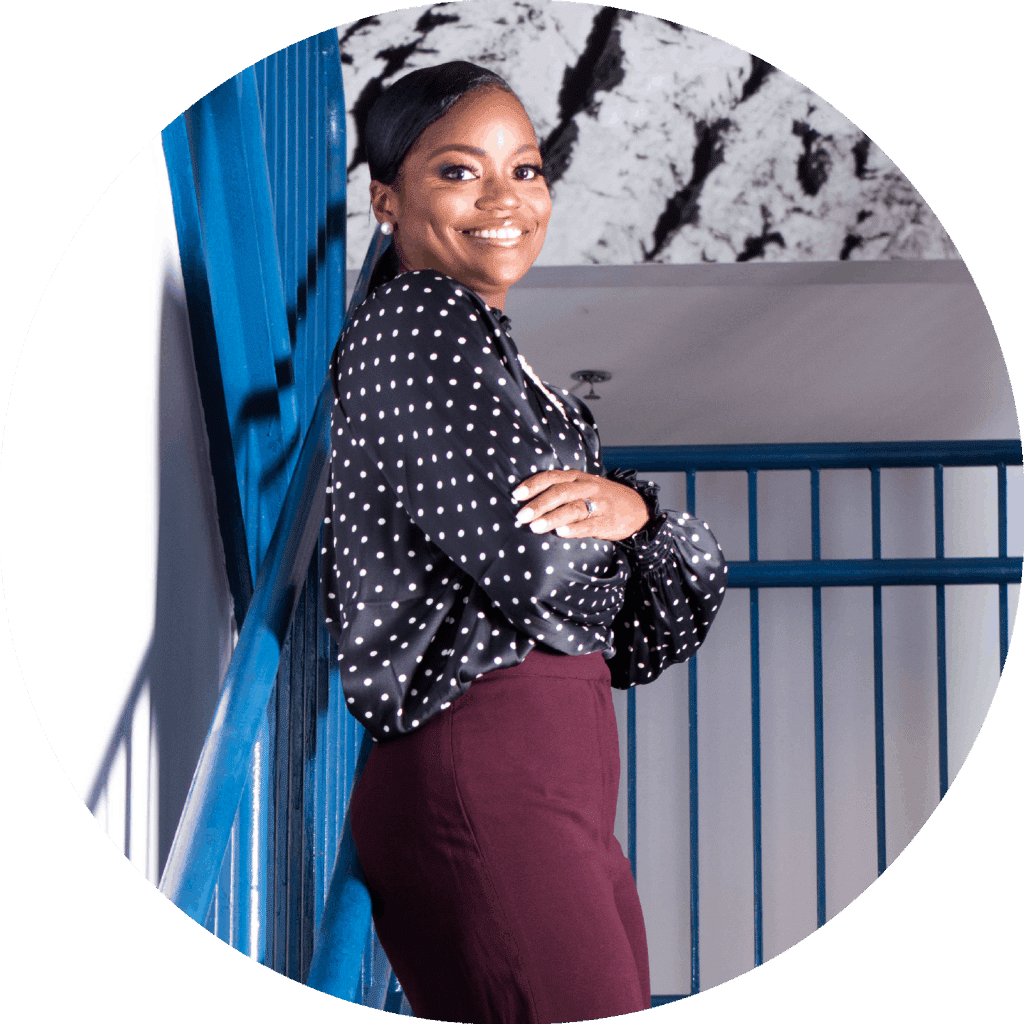

Hi, I'm Tanesha.
I’m a current middle school administrator who loves breaking down complex topics and providing opportunities for educators learn, reflect, practice, and implement methods that foster equity and anti-racism. I believe we win together!





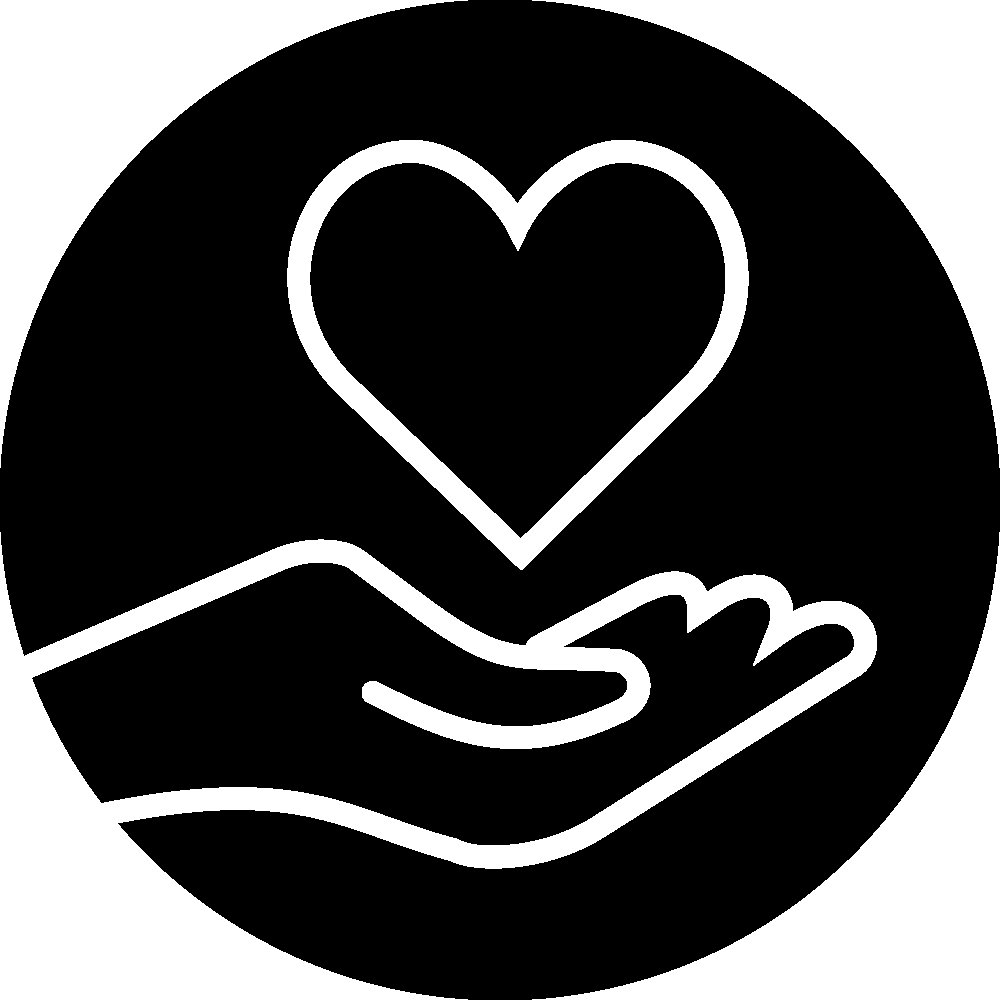



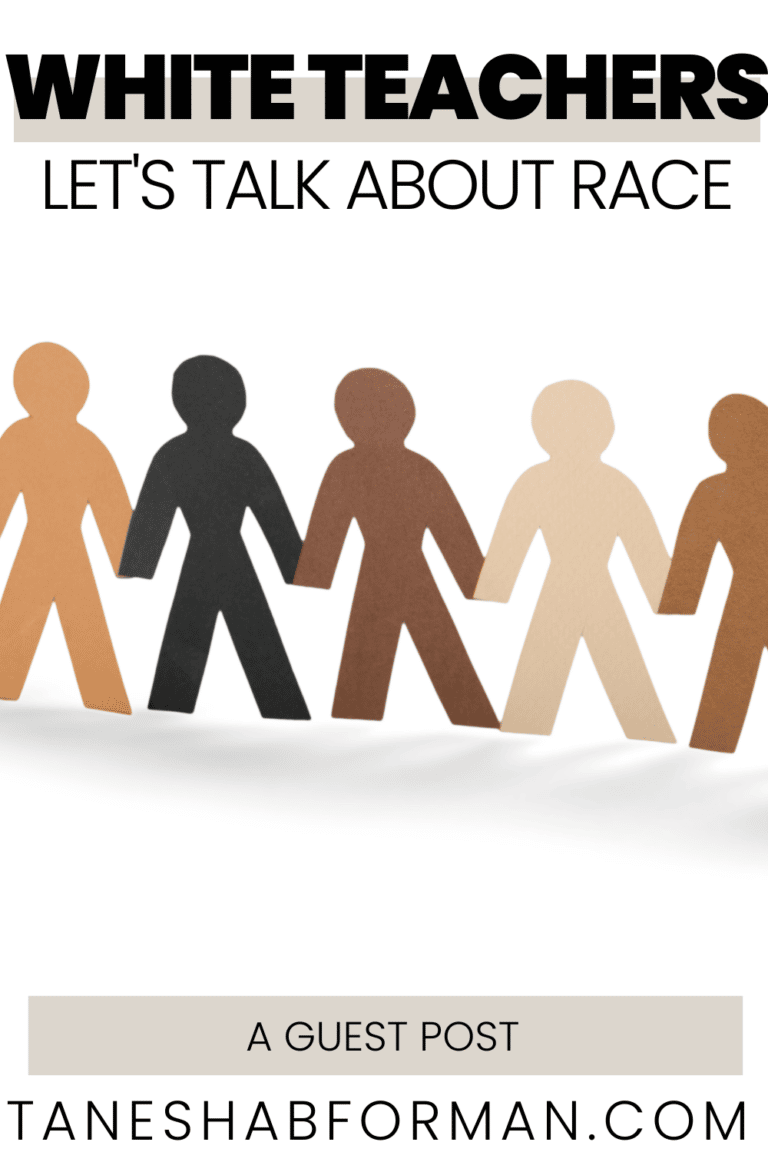
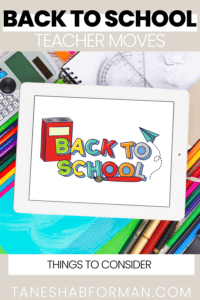
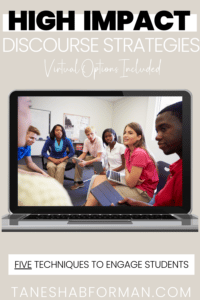

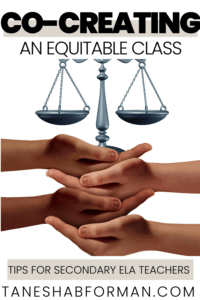

2 thoughts on “A to Z Anti-bias/Anti-racist micro moments”
This was an awesome and insightful list. Thank you for sharing! I work with 7th grade students to explore their career interests through a program that connects students to various companies around our city. I recently taught a code-switching lesson to hold space for a conversation about entering different (mainly white) spaces and how this might feel. To add a little humor to the lesson, I started with a video by Key and Peele – specifically the skit where Peele plays Obama and greets his admirers differently. Throughout the skit, he daps up and greets people of color with more enthusiasm and comfort than he does the white people while switching effortlessly between the two. My students, who are mainly African-American, commented that they thought Peele was being racist. I tried to draw back to students’ own experiences – how they exhibit themselves differently in different environments like school and home, but I’m worried I ended up sending the wrong message. Any advice?